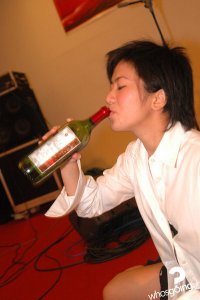
WHAT IS A GRAND CRU? To answer that allow me to digress a bit.
Last night we had Baricci 2001 Brunello for dinner. The wine was medium dark and the nose almost absent. On the palate the wine had little in the way of density but there was submerged fruit. The finish was clean and had yet to develop length. But the structure and balance was perfect and we agreed this was likely to develop into one of the finest brunellos of the vintage ( an assessment we had likewise made more than a year ago, when we tasted this wine blind). So one may well ask how such a prosaic description of a wine leads us to project potential greatness?
As background, the Baricci is from vines high up in the mountains (Montosoli region) and everything about it bespoke cool and composed. Haughty and reserved. Terroir at work. Absent was the lush glossy fruit that thrills palates seeking immediacy and inspires passionate plaudits from some critics. There was instead fruit that was sleek, suave and understated . The more we drank the more we loved its hidden nuances. The concentration was there but it needed to be unraveled. Precision was its hallmark, not port-like chocolatey fruit. While not yet complex this was Grand Vin.
The phrase “Grand Vin” is not necessarily restricted to Grand Cru Burgundy or other pedigreed wines from elsewhere. But Grand Cru burgundy should be synonymous with “Grand Vin”. It is often not immediately apparent when a wine should deserve this exaltation because it is not possible to quantify inherent quality. The more its renown the more nuanced and subtle it usually is. An intensity of fruit, while desirable, is not one of the prime assets of a Grand Cru but traits of precision, persistence and purity are what eventually exalts these wines. Floridity and immediacy are more attributable to wines of less class. But, like the Baricci Brunello, that sparked this essay , a wine which was young , rough and tight , other wines of Grand Vin quality likewise only give sneak peeks of what is to come. They might not set the taste receptors on fire but they oftentimes send brain cells tingling with excitement.
The designation “Grand Cru” for certain vineyards is not because they yield fruit that have high alcohol potential. In fact it is almost the reverse. The vineyards are often on poor soil and poorly exposed and fruit barely ripens. For instance, upper sections of Chambertin and Latricieres are cool and sheltered by woods just above them. Even in good years (at least in the past) they often give a measly 11.5% alcohol . So chaptalization is/was often necessary just to balance the wine out with body (alcohol). BUT, the 2005 vintage needed no such assist. Fruit came in at around 13.5 % potential alcohol in nearly all the Grand Cru vineyards. As it did in 2003 as well. Yet in the 03's the qualities of nuance, precision and finesse are completely swamped by the aggressive intensity of the fruit hogging the limelight , which is not what Grand Vin is about. The 2003's are big wines but without balletic athleticism. Balance is the key to a Grand Vin and that is why the Red Burgundy Grand Cru 2005's, even with their rough & tough youthfulness at this young age, will mature in a slow arc, unlikely to please those without patience, and exemplify the definition of what it takes to be a Grand Vin. They may ( nearly always) show less well at this point in time than 1er Crus or even Village wines but their greatness, hopefully, can be sensed even now.



